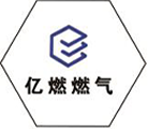
Nov . 05, 2024 23:20
Back to list
Pressure Relief Equipment for Safe and Efficient Operations in Various Industries
Pressure Relief Equipment An Essential Component for Safety and Efficiency
Pressure relief equipment is fundamental in various industries, especially where high pressure is an inherent risk. This equipment plays a crucial role in maintaining safety, efficiency, and compliance with regulatory standards. In this article, we will explore the types of pressure relief devices, their applications, and the importance of regular maintenance and testing.
Types of Pressure Relief Equipment
There are several types of pressure relief devices, each designed to handle specific pressure conditions and media. The most common types include
1. Relief Valves These valves automatically open at a preset pressure to release excess pressure, thus preventing potential explosion or damage. They are widely used in steam, gas, and liquid applications.
2. Safety Valves Similar to relief valves, safety valves are primarily used in gas service. They operate automatically and are crucial in protecting against rapid pressure build-up.
3. Pressure Relief Devices (PRDs) These devices are designed to protect equipment from excessive pressure by releasing the pressurized substance. PRDs can be mechanical or electronic, and their design depends on the application and the required pressure settings.
4. Bursting Discs Also known as rupture discs, these are non-reclosing pressure relief devices that fail at a predetermined pressure. They are often used in applications where rapid and complete discharge of pressure is necessary, such as in chemical processing.
Applications of Pressure Relief Equipment
.
- Oil and Gas In the oil and gas sector, pressure relief devices are critical components of drilling and production equipment. They help manage pressures in pipelines and processing facilities, preventing catastrophic failures.
معدات تخفيف الضغط

- Power Generation Power plants rely on pressure relief valves to ensure safe operation of boilers and turbines. By managing steam and gas pressures, these devices help maintain efficiency while protecting vital equipment.
- Chemical Manufacturing In the chemical industry, pressure relief equipment is vital for safety protocols. It prevents overpressure situations in reactors and storage vessels, which can lead to chemical leaks or explosions.
- Pharmaceuticals The pharmaceutical industry also utilizes these devices to maintain safe production processes. Controlling pressure in reactors and other equipment is essential for producing safe and effective medicines.
Importance of Regular Maintenance and Testing
While pressure relief equipment is designed to operate automatically and reliably, it requires regular maintenance and testing to function effectively. Undetected wear or damage can lead to failure during critical times, resulting in potential hazards for personnel and equipment.
1. Routine Inspections Regular visual inspections can help identify issues such as corrosion, leaks, or mechanical wear. Operators should ensure that the pressure settings are calibrated correctly based on the latest operational data.
2. Testing Procedures Routine functional testing should be conducted to confirm that pressure relief devices operate at the specified set points. Testing can also help detect any malfunctions in systems that ensure timely release of pressure.
3. Documentation Keeping detailed records of all maintenance and testing activities is essential for compliance with industry regulations. It ensures that all equipment is within its safe operational limits and can provide useful data for future inspections.
Conclusion
In summary, pressure relief equipment is a critical aspect of industrial safety and efficiency. By understanding the various types of pressure relief devices and their applications, industries can better safeguard their operations against the risks posed by excessive pressure. Ultimately, regular maintenance and testing are paramount in ensuring these devices perform reliably, protecting both personnel and infrastructure from the dangers associated with high-pressure scenarios. Maintaining rigorous safety standards not only enhances operational integrity but also fosters a culture of safety across all levels of an organization.
Latest news
-
Safety Valve Spring-Loaded Design Overpressure ProtectionNewsJul.25,2025
-
Precision Voltage Regulator AC5 Accuracy Grade PerformanceNewsJul.25,2025
-
Natural Gas Pressure Regulating Skid Industrial Pipeline ApplicationsNewsJul.25,2025
-
Natural Gas Filter Stainless Steel Mesh Element DesignNewsJul.25,2025
-
Gas Pressure Regulator Valve Direct-Acting Spring-Loaded DesignNewsJul.25,2025
-
Decompression Equipment Multi-Stage Heat Exchange System DesignNewsJul.25,2025

